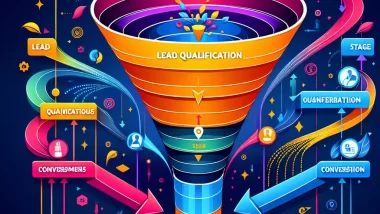Key Metrics to Track for Segmented Campaigns
Key Metrics to Track for Segmented Campaigns play a crucial role in evaluating the effectiveness and success of your email marketing strategy. One of the key metrics to monitor is the open rate, indicating the percentage of recipients who opened your email. A high open rate suggests that your subject line and sender name are engaging, while a low open rate may indicate the need for optimization in these areas.
Click-through rate is another essential metric to track, showing the percentage of recipients who clicked on a link within your email. A high click-through rate signifies that your content is relevant and compelling to your audience. Additionally, monitoring the conversion rate is vital to measure how many recipients took the desired action after clicking on a link in your email. By analyzing these key metrics, you can gain insights into the performance of your segmented campaigns and make data-driven decisions to enhance your email marketing efforts.
Conversion Rate Optimization
To optimize conversion rates in segmented email campaigns, it is crucial to focus on personalized content that resonates with your audience. By tailoring your messaging to address the specific needs and interests of different segments, you can significantly increase the likelihood of recipients engaging with your emails. This can be achieved by leveraging data insights to create targeted campaigns that speak directly to the preferences of each segment, ultimately leading to higher conversion rates.
In addition to personalized content, optimizing conversion rates also involves creating clear and compelling calls to action (CTAs) that prompt recipients to take specific actions. By using strong and action-oriented language, strategically placing CTAs throughout the email, and making them visually prominent, you can guide recipients towards the desired conversion goal. Testing different variations of CTAs and analyzing their performance can provide valuable insights into what resonates best with each segment, allowing you to continuously refine and improve your conversion optimization strategies.
Challenges in Segmentation Implementation
Segmentation implementation can present a variety of challenges for email marketers. One common issue is ensuring the quality of the data used to segment the email list effectively. Inaccurate or outdated information can lead to misdirected emails and ultimately lower engagement rates. It is crucial for marketers to regularly review and update their data sources to maintain segmentation accuracy.
Another challenge in segmentation implementation is the complexity of creating and managing multiple segments. Marketers may struggle to find the right balance between creating highly targeted segments and managing an overly fragmented email list. This can lead to difficulties in delivering relevant content to each segment without overwhelming subscribers with too many emails. Finding the optimal segmentation strategy that maximizes personalization while maintaining efficiency is key to overcoming this challenge.
Data Quality Assurance
Data quality assurance is a critical aspect of successful email segmentation. Ensuring that your data is accurate and up-to-date is essential for delivering targeted and personalized content to your subscribers. One way to maintain data quality is by regularly cleaning your email list and removing any outdated or incorrect information. This will help improve the overall effectiveness of your segmentation strategy and increase the likelihood of engagement from your subscribers.
In addition to cleaning your email list, it’s important to regularly monitor and analyze the data you collect from your campaigns. By tracking key metrics such as open rates, click-through rates, and conversion rates, you can gain valuable insights into the performance of your segmented campaigns. This data can help you identify areas for improvement and refine your segmentation strategy to better meet the needs and preferences of your subscribers.
Enhancing Segmentation with Dynamic Content
Enhancing segmentation with dynamic content can significantly boost the effectiveness of your email campaigns. By tailoring the content of your emails to specific segments of your audience, you can deliver more personalized and relevant messages that are more likely to resonate with recipients. Dynamic content allows you to create different versions of an email, each targeted towards a different segment of your email list based on specific criteria such as demographics, behavior, or preferences.
When incorporating dynamic content into your segmented email campaigns, it is crucial to focus on creating compelling and engaging content that speaks directly to the needs and interests of each segment. By utilizing dynamic content, you have the opportunity to showcase different products, promotions, or messages to different segments of your audience based on their unique characteristics. This level of customization can help increase open rates, click-through rates, and ultimately drive conversions as your emails become more relevant to each recipient.
A/B Testing Strategies
When it comes to A/B testing strategies for segmented email campaigns, it is crucial to test only one element at a time to accurately measure the impact of the changes made. This means isolating variables such as subject lines, call-to-action buttons, or email layouts to determine what resonates best with your segmented audience. By conducting these tests methodically and analyzing the results carefully, you can gain valuable insights into the preferences of different segments within your email list.
In addition, it is important to set clear goals for your A/B tests to effectively measure success. Whether your objective is to increase open rates, click-through rates, or conversions, having a specific target in mind will guide your testing process and help you make informed decisions based on the data collected. By constantly iterating and refining your A/B testing strategies, you can optimize your segmented email campaigns for better engagement and ultimately drive greater results.
FAQS
What is email list segmentation?
Email list segmentation is the process of dividing your email subscribers into smaller, more targeted groups based on specific criteria such as demographics, behavior, or preferences.
Why is email list segmentation important for automation campaigns?
Email list segmentation is important for automation campaigns because it allows you to send more personalized and relevant content to your subscribers, ultimately leading to higher engagement and conversion rates.
How can I track the performance of segmented email campaigns?
You can track the performance of segmented email campaigns by monitoring key metrics such as open rates, click-through rates, conversion rates, and overall engagement levels for each segmented group.
What are some common challenges in implementing segmentation for email campaigns?
Some common challenges in implementing segmentation for email campaigns include ensuring data quality and accuracy, managing multiple segments effectively, and creating dynamic content that resonates with each segment.
How can I enhance segmentation with dynamic content?
You can enhance segmentation with dynamic content by personalizing email messages based on each segment’s preferences, behavior, or past interactions with your brand. Dynamic content can help increase engagement and drive conversions.
What are some effective A/B testing strategies for segmented email campaigns?
Some effective A/B testing strategies for segmented email campaigns include testing different subject lines, email copy, calls to action, and send times across different segments to determine the most effective combination for each group.



